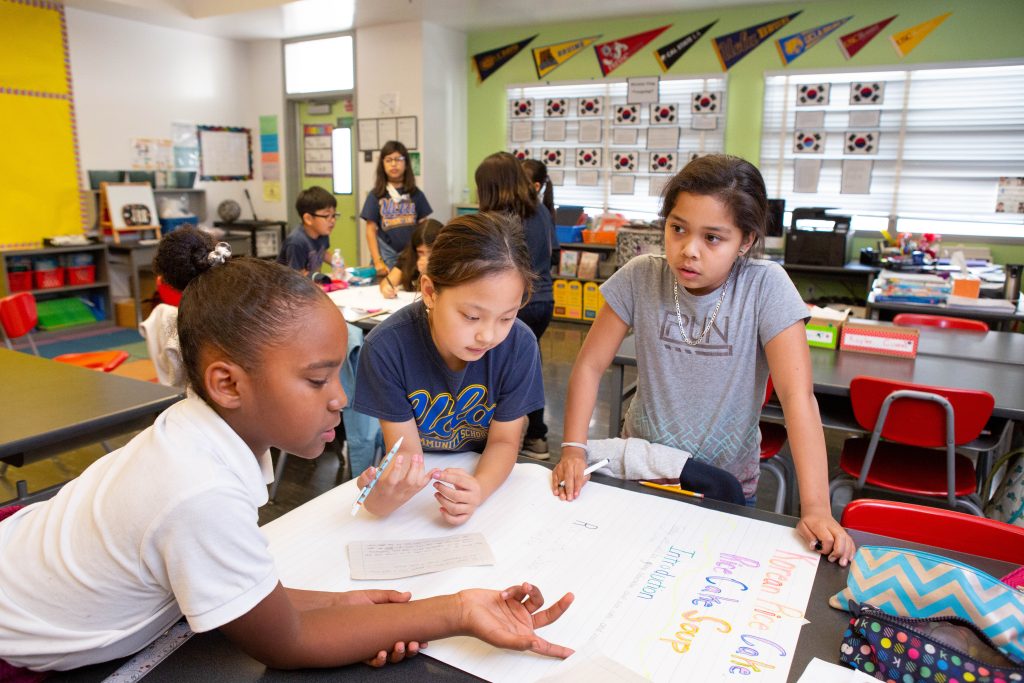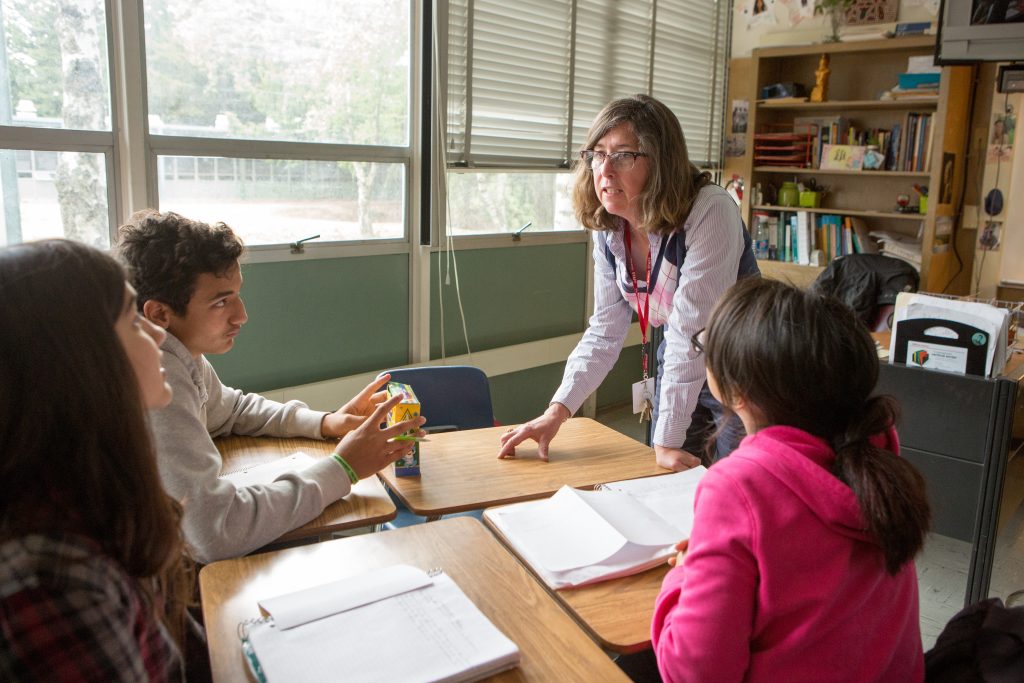A Day in the Life of a Teacher
 Preparing to Learn
Preparing to Learn
A Day in the Life of a Teacher
Before discussing what a day in the life of a teacher looks like, complete the assessment below to check what you already know, what you need to unlearn, and what you might be interested in exploring further.
Consider A Day in the Life
From the Elementary Perspective[1]
As an elementary teacher, you will be starting early! Typically, the school doors open at 7 AM so that students can be served breakfast before school, and as their teacher, you greet them as they enter the cafeteria. Once your breakfast morning duty is over, you then hurry to your classroom to await the 25 students who will come filing into your classroom shortly thereafter. To prepare for their entrance, you ensure that your materials and directions for tasks are ready and that you have calming music playing.
As students enter your classroom, you collect signed forms, respond to notes from families, help students with their morning activities, take attendance, and hold a morning meeting. For the rest of the day, you are simultaneously teaching the content areas, including English, math, science, and social studies, and helping students develop social skills through group work and playtime. Various other educators drop in throughout the day: a reading specialist to work with a group of readers who need extra support, an occupational therapist to help a student with some motor skills still developing, a speech pathologist to help students with articulation and language development, an instructional coach, and sometimes the principal to give you feedback on your instruction.
It sounds busy, right? Well, it is! However, teachers are also provided respite throughout their school day, as students leave the classroom to learn from other teachers when they study the subjects of music, art, physical education, and media library. In addition to this, students also leave the classroom to attend lunch and recess. During these times, you will meet with your grade-level team for planning. During lunchtime, you will monitor students, take a bathroom break, and potentially check your email and school mailbox. After a post-recess water break, you return to classroom instruction, with a few interruptions for students leaving early for doctor’s appointments, a student needing to go to the nurse’s office, another teacher popping in to borrow a book, or sometimes even a whole-school assembly for a class play or anti-bullying program.
When it is time to pack up for the day at 2:30, you make sure all students know how they are getting home that day, have their materials packed and ready to go, and then you bid them farewell at the door with a goodbye, high-five, or handshake as they head to their dismissal area. You monitor a dismissal area once your room is empty to ensure everyone is safe. After school, you might have a faculty meeting, a debrief with an instructional coach based on today’s observation, or time to prepare tomorrow’s instructional materials. You marvel at how quickly yet another day has passed in the life of an elementary school teacher.
From the Secondary Perspective
As a secondary teacher, your day will begin later than that of elementary teachers. For secondary educators, the bell rings at 8:15 AM, but by now, you’ve already been at school for over an hour. During this time before school, you will be making copies, checking emails, and writing the plans and goals for the day on the board. As an English teacher, you’ve decided to work on writing fluency this year, so as the students enter the classroom, they take out their journals and begin responding to the prompt on the board. Every day, the class meets, and the students write for five minutes. Then, they briefly discuss their responses with each other and as a whole group. You write alongside them to model what it looks like and often share your writing with your class. You notice your students’ growth, for at the beginning of the year, most of your students struggled to write for five straight minutes, but now nearly all of them have gotten the hang of it. The rest of the lesson involves a mini-lesson on figurative language, small group discussions about students’ literature circle books, and a whole group review game to prepare for the unit test on Wednesday.
Last year, the school adopted a block schedule, so your classes are now 75 minutes long. You teach three of four blocks daily; today is an A Day, so the first block is 9th-grade honors, and the other two are 10th-grade general English. Tomorrow, you will teach two blocks of 9th-grade general English and one block of 10th-grade College Preparatory English. You hate these labels and what they do to the students in your classrooms, and, as department chair, you have been working with your principal to remove such rigid tracking.
 Ten students stream into the room between the 1st and 2nd blocks to retake tests, make up missed homework, and hang out to read. You glance at the learning management system and see that 45 essays are waiting to be graded, but there won’t be time to look more closely at them until later tonight. During lunch, some of your journalism club students are in the room, partially working on stories and layouts but mostly sharing the latest news about their friends and acquaintances.
Ten students stream into the room between the 1st and 2nd blocks to retake tests, make up missed homework, and hang out to read. You glance at the learning management system and see that 45 essays are waiting to be graded, but there won’t be time to look more closely at them until later tonight. During lunch, some of your journalism club students are in the room, partially working on stories and layouts but mostly sharing the latest news about their friends and acquaintances.
For the Professional Learning Community (PLC) meeting during the fourth block, you will meet with the other 10th-grade English teachers to look at the results of a common assessment. At some schools in the district, the grade-level teachers all teach the same lessons, but fortunately, you have more freedom to teach the material at this school. A new teacher on the team is struggling with classroom management, so the first 15 minutes of the meeting are spent discussing some strategies that have worked in other teachers’ rooms.
The end of the day comes at 3:15 PM, but it will be another hour or two before you head home. There are sub plans to finish for Thursday because you will be attending a district-wide training for working with English Language Learners, and you are hoping to send at least ten texts and emails to parents. The initial fear of parent contact faded quickly; now, it’s one of your strengths. In your current practice, you reach out to parents early and often, connecting with families around student successes first. Later, if students begin struggling, contact is much more seamless. It’s been a long, exhausting day, but interacting with the students has made it all worth it.
 Deeper Dive
Deeper Dive
Becoming A Teacher
From the Special Education Perspective
As a special education instructor, you arrive about an hour before teachers officially start the school day. You greet the office manager, principal, and custodian on the way to your classroom. Aside from these three, the building is mostly empty for another half hour. You’ve found that this quiet morning time provides the best opportunity to catch up on Individualized Education Plan (IEP) paperwork, reflect on student data from the prior day, and adjust instruction for the coming day. As the official start time for the school day draws close, you quickly dash to the copy machine with your fingers crossed that it isn’t broken and that there isn’t a line of teachers anxiously waiting their turn. It seems to be your lucky day: your last photocopies shoot out of the machine just as the overhead announcement calls teachers to report to their morning duty stations. You quickly drop the copies off in your classroom, pick up your data binder, and dash out the door to the bus loop.
The bus loop is a flurry of activity. You greet students with high-fives, waves, and countless reminders to use their walking feet. Amid all of these informal greetings, you are slipping in some IEP services by completing morning check-ins with several students with behavioral or social-emotional goals on their IEPs. From an outsider’s view, these check-ins don’t look that different from your interactions with other students. However, intermixed with those high-fives and waves, you quietly assess needs, remind students of the goals they are working on, offer support where needed, and quickly make notes in your data binder. On this day, a third grader with autism reports that he is feeling like a category 3 hurricane. You know he needs some quiet time before joining his homeroom class, so you walk him to the computer lab, where he has an open invitation to help the instructional technology specialist set up the computer lab for the day.
The halls begin to clear as the instructional day begins. You spend the next six hours in constant motion, serving 18 students across four grade levels. You transition between co-teaching in general education classes and pulling small groups of students to your classroom for intensive intervention in literacy, math, or social skills. When co-teaching, you supplement the general education teacher’s deep knowledge of grade-level content with specialized instructional strategies that make content meaningful and accessible for students with disabilities and other learning differences. When providing intensive intervention, you implement research-based programs that target specific skills identified in your students’ IEPs. Data collection is ongoing and individualized for each student, so your trusty data binder is by your side in all settings.
Usually, you would end the school day by completing check-outs with the same students you saw in the morning. Today, you assigned that responsibility to a teaching assistant so you can participate in a special education eligibility meeting. It is the initial eligibility meeting for this student and her family. A team of educators works alongside the parents to determine if the first grader has a disability and needs special education. Her parents feel overwhelmed by the process and fearful when the team concludes that their daughter has an intellectual disability. This is a moment when your job and your passion meet. You assure the parents that the future is bright for their daughter, that the educational label does not change who she is or who she will be, and that you will highlight her strengths and address her needs as you plan her education with them as equal partners. The decisions you will make with this family are new to them, but for you, they are a familiar and important part of your day as an elementary special education teacher.
References
- The following chapter is revised from Foundations of American Education: A Critical Lens (Chapter 1) by Melissa Wells and Courtney Clayton, under a Creative Commons Attribution-NonCommercial-ShareAlike 4.0 International License ↵
